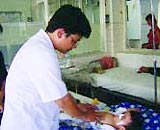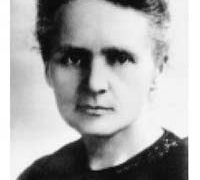Hydrocephalus is the common name for ventricular hydrocephalus in children, a congenital defect of the nervous system characterized by an enlarged head. Many believe that this condition is untreatable, leading to reluctance in seeking medical intervention for their children.
 |
| Treatment of hydrocephalus at Children’s Hospital 1. (Photo: Thanh Niên, VNE) |
Two-year-old Si Phuc is unable to recognize anything, showing developmental delays both mentally and physically. Upon examination at Children’s Hospital 1 in Ho Chi Minh City, doctors diagnosed Phuc with hydrocephalus. According to the hospital’s statistics, this condition accounts for 80% of the cases of neural tube defects treated as inpatients over the last six years. On average, Children’s Hospital 1 treats 52 children with hydrocephalus each year.
Typically, cerebrospinal fluid is produced daily in children. In healthy children, the brain maintains a balance of this fluid. However, in affected children, the brain cannot self-regulate, resulting in an excess of cerebrospinal fluid compared to what is reabsorbed into the bloodstream, leading to an accumulation of fluid in the head.
According to Dr. Nguyen Duc Tuan from the Surgery Department at Children’s Hospital 1, the clinical symptoms include: an unusually large head; a wide and bulging anterior fontanel (soft spot); and eyes that tend to gaze downward. In more severe cases, children may experience paralysis (most commonly in the lower limbs), deafness, and developmental delays. These symptoms typically appear about one month after birth.
There are several causes for hydrocephalus in children, including: encephalitis, purulent meningitis, cerebral hemorrhage, subarachnoid hemorrhage, obstetric trauma, and congenital factors. Most cases of hydrocephalus admitted to Children’s Hospital 1 are congenital. The condition can affect any child, although it is most frequently seen in children under one year of age.
Early Treatment is Beneficial
In the past, treatment options for hydrocephalus were limited, and as a result, many people mistakenly believe that the condition is untreatable. Consequently, families with affected children often delay seeking medical help until prompted by someone else. As a result, many children with hydrocephalus arrive at Children’s Hospital 1 after having the condition for over a year.
Dr. Nguyen Duc Tuan states that currently, there is no medication that can cure hydrocephalus; treatment mainly involves surgical intervention. A small number of cases may resolve on their own without treatment. However, children may suffer from long-lasting and non-reversible complications, and their heads may remain enlarged.
During the surgical procedure, doctors will place a shunt to drain cerebrospinal fluid from the head to the abdominal cavity. This tube is positioned beneath the skin and remains permanently in the patient’s body. On a daily basis, excess cerebrospinal fluid will be drained to the abdomen, where it will be reabsorbed back into the bloodstream.
If treated early, the enlarged head condition can be resolved; however, if treatment is delayed (typically beyond one year), surgery will only address the complications caused by the condition, as the skull bones will have fused, making it impossible to reduce the size of the head. After surgery, the child will require follow-up examinations to monitor for any potential blockage in the shunt.

















































